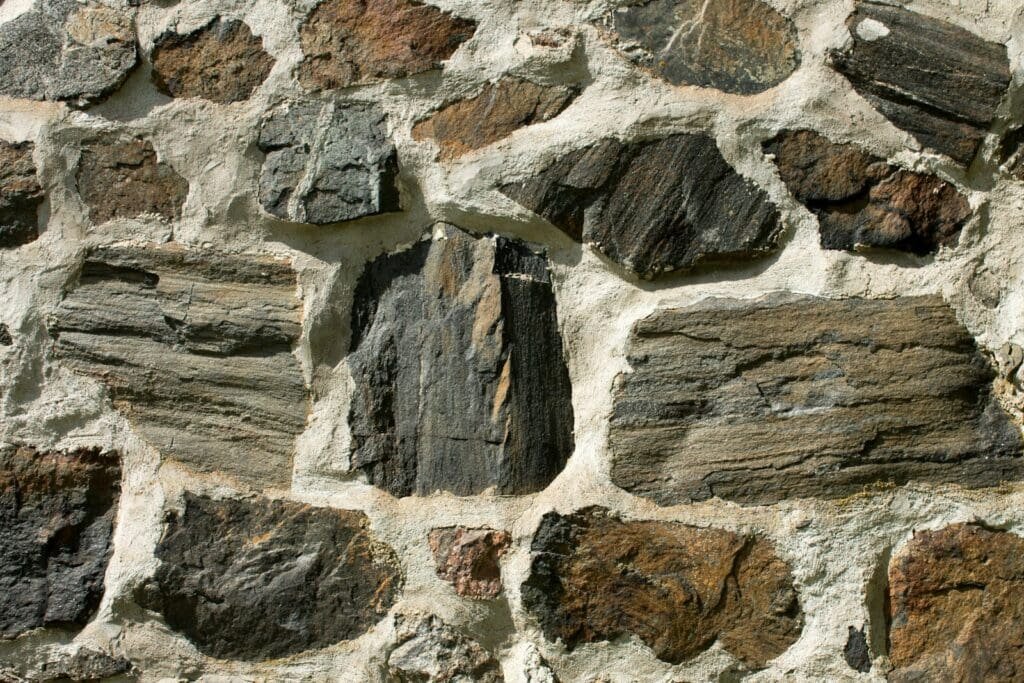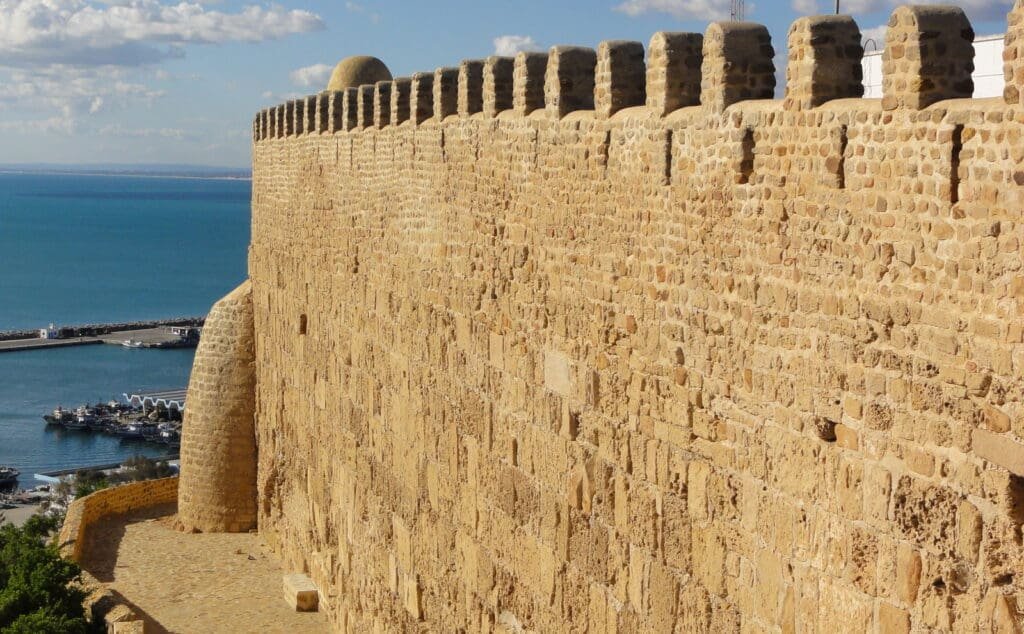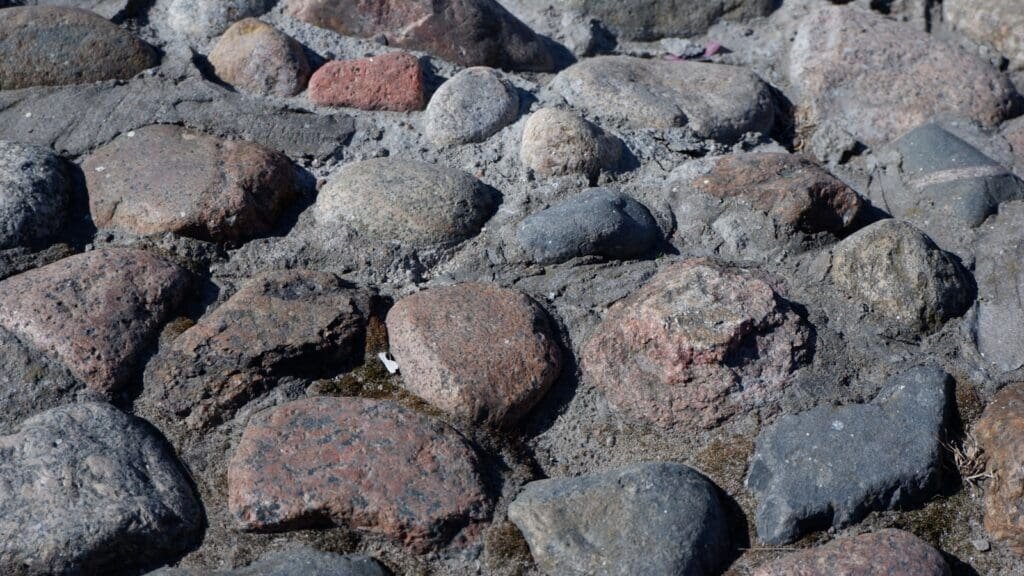Introduction to Rubble Masonry
Did you know that there are various methods of constructing a building using stones?
One such method is the use of Rubble Masonry, a technique as unique as its name. In this article, we will explore the world of Rubble Masonry and its wide-ranging applications in construction.
So, what is Rubble Masonry, you ask? Which materials are used, what are the advantages, and most of all, where is it applied?
This article will answer all these questions and walk you through the different types of Rubble Masonry, the materials used, and installation techniques. We will also look at various methods of rubble wall construction and its practical uses and applications.
Join us as we take a historical tour through construction and discover how Rubble Masonry has stood the test of time.
Table of Contents
Rubble Masonry in Construction

Definition and Types of Rubble Masonry
Rubble masonry is the use of rough, unhewn building stones set in mortar. The stones are often irregular in shape and size.
Types of Rubble Masonry
- Random Rubble Masonry: Irregular stones without specific pattern or formation.
- Coursed Rubble Masonry: Stones arranged in courses, though still irregular.
- Dry Rubble Masonry: Stones are laid without any mortar.
- Hammer-Dressed Rubble: Stones roughly shaped with a hammer.
Materials Used in Rubble Masonry
| Material | Purpose |
|---|---|
| Stone | Main building component, often granite, limestone, or sandstone. |
| Mortar | Binds the stones together, typically made from lime or cement. |
| Sand | Used in the mortar mix to provide bulk and volume. |
| Water | Essential for mixing with mortar components. |
Advantages of Rubble Masonry
- Cost-effective and locally available materials.
- Good thermal insulation properties.
- Resistant to fire and termites.
- Aesthetic and rustic appearance.
Applications of Rubble Masonry
- Retaining Walls: Commonly used for holding back soil.
- Foundations: Provides strong base for buildings.
- Boundary Walls: Used in rural setups for fencing.
- Cladding: Decorative outer layer for buildings.
Installation Techniques
- Site Preparation: Clear and level the ground.
- Stone Selection: Choose stones based on size and shape consistency.
- Mortar Mixing: Appropriate ratios of cement, sand, lime, and water.
- Laying Stones: Arranging stones with gaps filled by smaller stones and mortar.
- Curing: Allow mortar to set and cure properly for strength.
For more detailed information on different types and construction practices, it would be useful to refer to resources like Encyclopedia Britannica.
What is the Method of Rubble Wall Construction?

Basic Principles and Techniques
Rubble wall construction involves building walls using naturally occurring stones that are irregular in shape and size. These walls can be found in both historical and modern buildings, offering structural integrity and aesthetic appeal.
Foundation Preparation
- Excavation: Start by digging a trench to the required depth to form the foundation.
- Compaction: Ensure the trench bottom is well-compacted to provide a stable base.
- Footing Installation: Pour a concrete footing to distribute the load of the wall evenly.
Building the Wall
- Laying the First Course: Begin with the largest and flattest stones to provide a stable base. Use a level to ensure this course is horizontal.
- Mortar Application: Apply mortar in sufficient quantities to bed the stones. Avoid excessive mortar that could squeeze out and create weak joints.
- Staggering Joints: As you lay subsequent courses, ensure that joints do not align directly above each other. This practice, known as breaking the joint, reinforces the wall.
- Interlocking Stones: Place stones so they interlock with those around and below them. This geometric arrangement maximizes the wall’s stability.
- Using Chinking Stones: Insert smaller stones, called chinking stones, into the gaps between larger stones to fill voids and improve stability.
Structural Reinforcements
To enhance the strength and longevity of a rubble wall, certain reinforcements and techniques can be applied.
Buttresses and Pilasters
- Buttresses: Projecting structures built against the wall to counteract lateral forces.
- Pilasters: Vertical elements embedded in the wall that provide additional support.
Tie Rods
- Horizontal Tie Rods: Strong rods that run horizontally through the wall, tying opposite sides together to resist separation.
- Vertical Reinforcement: Incorporating steel bars or other vertical elements at intervals can improve vertical load handling.
Weather Protection Strategies
Protecting rubble masonry from weather elements prolongs its life and maintains its structural integrity.
Weatherproofing Techniques
- Waterproof Mortar: Use a mortar mix with waterproofing additives for areas prone to moisture.
- Surface Treatments: Apply sealants or water repellent coatings to the exterior of the wall.
- Proper Drainage: Ensure proper drainage around the wall to prevent water from pooling at the base.
Maintenance Practices
- Regular Inspections: Check for cracks, loosened stones, and other signs of wear.
- Repointing Mortar Joints: Replace damaged or eroded mortar to prevent water ingress.
- Vegetation Control: Remove plants and roots that can penetrate and weaken the wall.
These methods and techniques ensure rubble wall construction is robust, durable, and capable of withstanding various environmental conditions.
Rubble Walls: Practical Uses and Applications

Rubble walls are renowned for their rustic appeal and durability. They serve several essential functions in both historical and modern construction projects. Below, we expand on the specific uses of rubble walls and highlight their practical benefits.
Garden Walls and Landscaping
Rubble walls are often used in landscaping to create aesthetically pleasing garden walls and features.
- Terracing: Leveling sloped areas and creating flat spaces for planting.
- Boundaries: Defining the edges of garden areas or pathways.
- Raised Beds: Constructing raised garden beds for better soil drainage and planting ease.
Historical Restoration
Rubble walls play an important role in the restoration of historical structures.
- Castle Repairs: Rebuilding or reinforcing ancient castles and fortifications.
- Old Homesteads: Preserving the integrity and appearance of age-old rural homes.
- Archaeological Sites: Stabilizing and reconstructing ruins to maintain their historical authenticity.
Drainage and Erosion Control
Rubble walls are effective for managing soil and water flow in various environmental settings.
- Drainage Channels: Assisting in directing water away from construction sites or agricultural areas.
- Erosion Prevention: Reducing soil erosion on slopes and embankments by holding the soil in place.
Sound Barriers and Privacy Walls
Rubble walls can serve as functional barriers for noise reduction and privacy enhancement.
- Sound Absorption: The irregular surfaces of rubble walls help in diffusing and absorbing sounds, making them effective sound barriers.
- Privacy Screens: Providing visual and physical privacy around homes, parks, and outdoor spaces.
Heat Retention and Insulation
Rubble walls offer excellent thermal properties, making them ideal for creating energy-efficient buildings.
- Retaining Heat: Thick rubble walls can retain heat during the day and release it at night, helping to maintain a stable indoor temperature.
- Insulation: The stone’s natural insulation properties help in reducing the need for additional heating or cooling.
Rubble walls’ versatility ensures they are an integral part of various construction and restoration projects, contributing both functionally and aesthetically.
Rubble Concrete in Construction

Introduction to Rubble Concrete
Rubble concrete, also known as cyclopean concrete, is an age-old construction technique that combines large chunks of stone, known as “rubble,” with traditional concrete to form a robust and economical building material.
Construction Process
The construction of rubble concrete involves a series of steps to ensure a sturdy and long-lasting structure.
- Foundation Setting: Begin by setting a solid foundation using traditional concrete to provide a stable base for the rubble concrete mixture.
- Placement of Rubble Stones: Large rubble stones are strategically placed within the formwork, making sure they do not touch and allowing room for the concrete to flow between them.
- Pouring Concrete: Concrete is poured over and between the rubble stones, filling any voids and binding the stones together to form a cohesive mass.
- Vibration and Compaction: The mixture is then vibrated and compacted to ensure proper settling and avoid air pockets, which could weaken the structure.
- Curing: The structure is left to cure, allowing the concrete to harden and reach its full strength over time.
Materials Used in Rubble Concrete
Just like in rubble masonry, specific materials are essential for achieving a robust rubble concrete structure.
| Material | Purpose |
|---|---|
| Rubble Stones | Main structural elements, usually granites or similar hard rocks. |
| Cement | Binds the rubble stones and other aggregates together. |
| Sand | Provides bulk and volume to the concrete mix. |
| Gravel | Acts as additional aggregate within the concrete mixture. |
| Water | Essential for the chemical reaction that causes cement to set and harden. |
Advantages of Rubble Concrete
Utilizing rubble concrete in construction offers several benefits that contribute to its continued use today.
- Cost-Effective: Often cheaper than traditional concrete due to the incorporation of readily available rubble stones.
- Enhanced Strength: The large stones provide additional mass and strength, contributing to a sturdy final structure.
- Waste Reduction: Utilizing rubble stones, often considered waste material, promotes recycling and sustainability.
- Aesthetic Appeal: Depending on the finishing techniques, the exposed stone can add a unique and attractive rustic appearance.
Applications of Rubble Concrete
Rubble concrete finds utility in various construction scenarios thanks to its strength, aesthetics, and cost benefits.
- Foundation Work: Provides a strong and durable foundation for buildings where soil conditions are variable.
- Retaining Walls: Ideal for creating robust retaining walls that can handle significant lateral earth pressure.
- Dams and Reservoirs: Often used in the construction of gravity dams and water retention structures due to its mass and stability.
- Bridges and Culverts: Utilized in infrastructure projects where added strength from large aggregates is beneficial.
Wrapping Up
In essence, rubble masonry and rubble concrete serve practical and aesthetic roles in construction.
Rubble masonry is notable for its cost-effectiveness, impressive thermal insulation, and resistance to fire and termites. It plays a fundamental role in building retaining walls, foundations, boundary walls, and cladding.
With various types – random, coursed, dry, and hammer-dressed – this technique offers unrivaled versatility.
Rubble concrete, on the other hand, delivers robust longevity, waste reduction, cost-effectiveness, and unique aesthetic appeal. Its primary applications include foundation work, retaining walls, dams, reservoirs, bridges, and culverts.
It’s worth noting that both rubble masonry and concrete have diverse practical uses in various settings, including landscaping, historical restorations, erosion control, sound barriers, heat retention, thus making impressive contributions to modern and historical construction projects.
Frequently Asked Questions – FAQs
What is rubble masonry?
Rubble masonry is a construction method that utilizes rough, unhewn, irregularly shaped stones set in mortar.
What materials are typically used in rubble masonry?
Mainly, the materials used include stone, which often could be granite, limestone, or sandstone, and mortar, which binds the stones together. Sand and water are also used in the mortar mixture.
What is rubble concrete and what materials does it entail?
Rubble concrete, also known as cyclopean concrete, combines rubble stones, cement, sand, gravel, and water to form a robust building material.
What are the advantages of using rubble masonry and rubble concrete?
Both rubble masonry and rubble concrete are cost-effective, strong, and have a unique aesthetic appeal. Rubble masonry also offers excellent thermal insulation and resistance to external elements like fire and termites, while rubble concrete promotes waste reduction and sustainability.
Where can I learn more about rubble masonry and rubble concrete?
You can find extensive information on these construction methods in resources like Encyclopedia Britannica and the Concrete Society.






